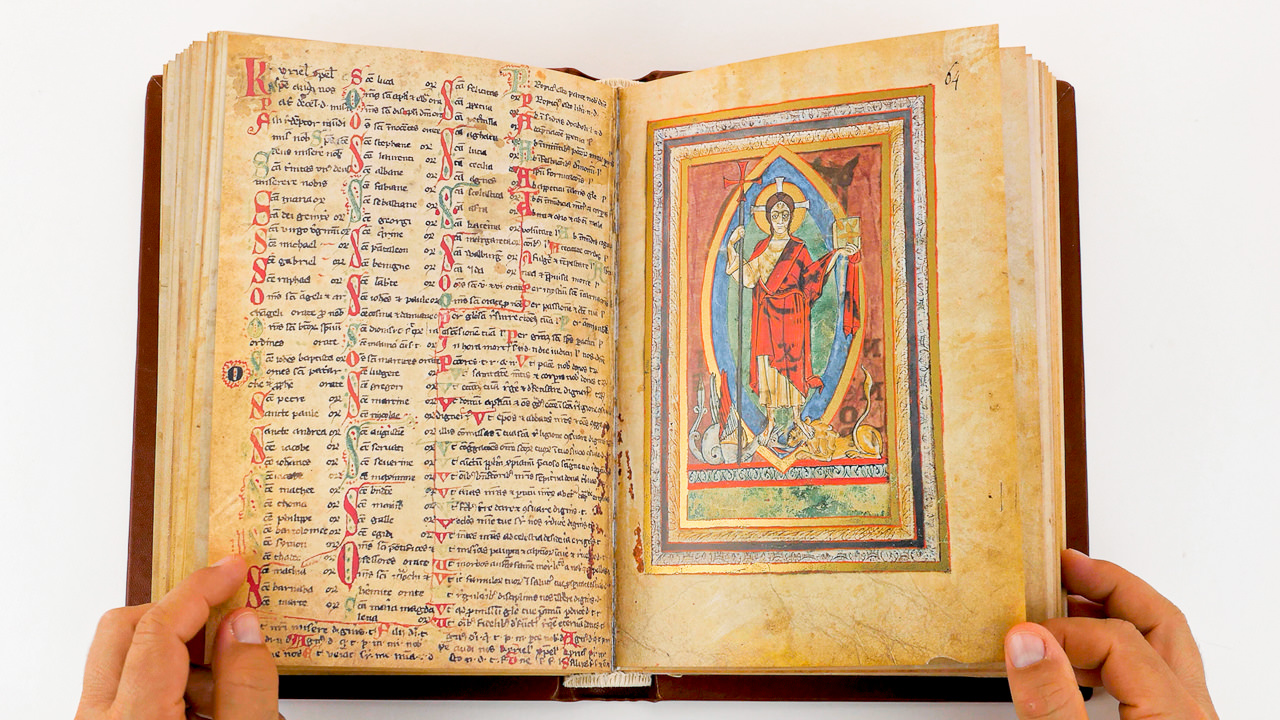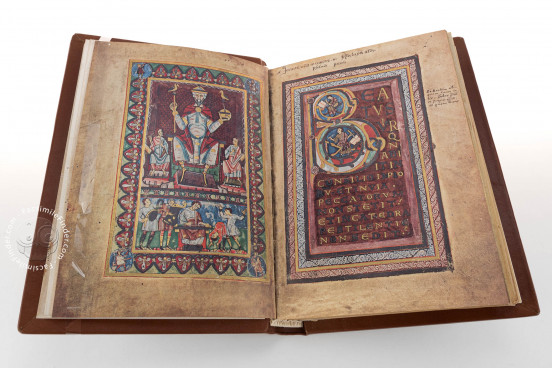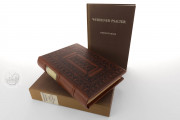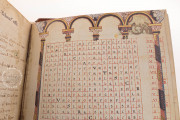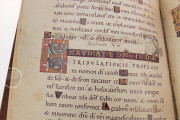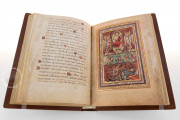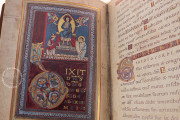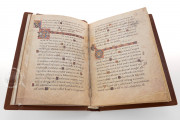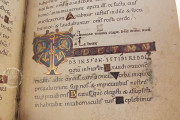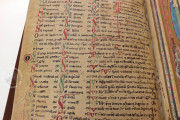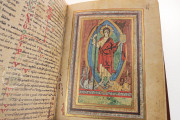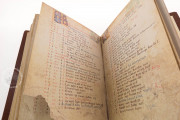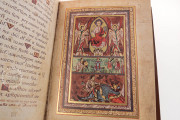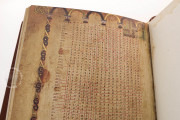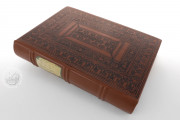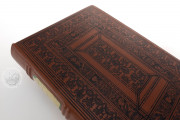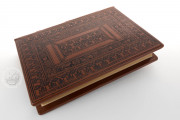The Werden Psalter is a spectacular Romanesque manuscript that showcases a broad range of influences. Created in the imperial abbey of St. Ludger’s in Werden, Germany, in the fifth decade of the eleventh century, it features three full-page illuminations paired with elaborate incipit pages. These are presented in gilded acanthus frames with purple-stained parchment and gold and silver lettering. A decorated calendar and ornamented initials throughout give the manuscript a timeless luxury.
In many ways, the manuscript appears older than it is. The text of the Psalms is written in long lines of an elegantly scribed Caroline minuscule with Rustic capitals glowing in gold and silver on a purple ground, a tradition drawn from Carolingian Renaissance. In contrast, the three surviving full-page figural illuminations and their corresponding incipit pages have greater affinity to Romanesque style and technique. This combination of old and new results in a splendidly refined work that captures the shifting artistic influences in eleventh-century German art.
A Deluxe Early Romanesque Psalter
A striking feature of the Werden Psalter is its use of gold and silver lettering on a purple background. This stunning technique dates back to the earliest surviving manuscripts of Late Antiquity and was renewed during the Carolingian Renaissance.
Here, the effect is limited to incipit pages, single bands to denote the initial line of each Psalm, and as a stylistic effect on individual capitals where the gold or silver letter sits within a small field shaped like the enclosed letter. Additional use of gold in the acanthus frames of the full-page illuminations and in the enlarged interlaced foliage of the incipit initials adds additional luxury.
Merging of Influences From Across Europe
The text of the Werden Psalter is the Roman, not Gallican, version indicating the source for the exemplar to be Anglo-Saxon England. This version makes four major divisions in the Psalms (1, 51, 101, and 109), and full-page illuminations and incipit pages precede each, those marking Psalm 51, likely a Crucifixion, now missing.
The iconography for these images comes from England, by good comparison to contemporary works like the Winchcombe Psalter (Cambridge, University Library, MS Ff. 1.23), however, the artistic style is very much more local, recalling Ottonian and Carolingian illumination.
Created at the Imperial Abbey of St. Ludger’s in Werden
The reason for the creation of this deluxe psalter is unknown. Some believe it may have been intended as a papal gift. Others argue it was commissioned for Abbess Sophie of the nearby Essen nunnery.
Regardless, it remained in Werden until the sixteenth century when it was briefly owned by the Glaser family. In 1683 it was returned to the monastery. After the foundation’s dissolution in 1803, it entered into the Königliche Paulinische Bibliothek and in 1823 the KGL Bibliothek. It is now housed in Berlin.
The elaborately tooled cover dates to the years after 1560. The rich brown leather darkened where the vegetal and figural designs were impressed in concentric frames. The virtues of Fortitudo, Prudencia, Justicia and, instead of Temperancia, the legendary Roman woman Lucrecia are featured. It is inscribed with the initials “S.R.”.
We have 2 facsimiles of the manuscript "Werden Psalter":
- Der Werdener Psalter (Standard Edition) facsimile edition published by Akademische Druck- u. Verlagsanstalt (ADEVA), 1979
- Der Werdener Psalter (Deluxe Edition) facsimile edition published by Akademische Druck- u. Verlagsanstalt (ADEVA), 1979

